Last updated: 28 September 2020
Mount Fuji isn’t always visible from Tokyo and even if you stay for a week, weather and season might have it hide behind clouds the entire time. But for most people, seeing Japan’s most famous mountain is at the top of the bucket list. So, to help you plan: when are the best chances of seeing Mount Fuji?
Which season is the best, when is the best time of the day? And how is the weather at Mt. Fuji connected to how it looks? We’ll tell you when to best see Mount Fuji in all its glory from various angles!
Recommended Stays With Stunning Views of Mt. Fuji
Basic Information about Mount Fuji
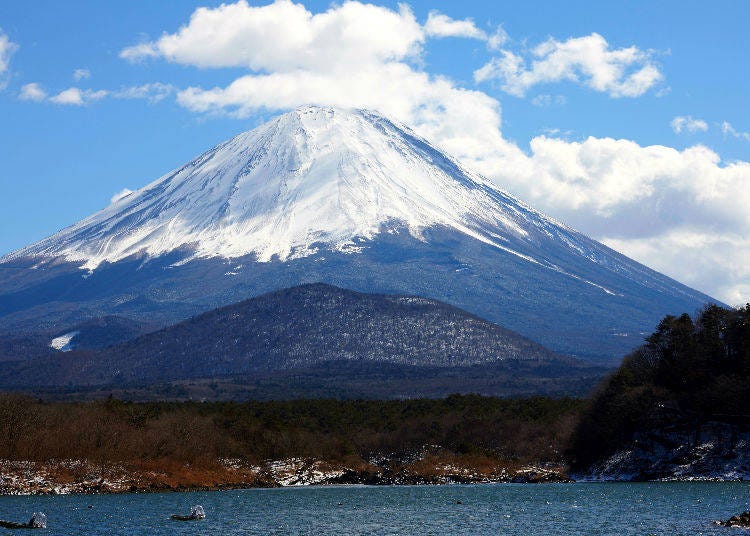
Mount Fuji is 3,776 meters high and the tallest mountain in Japan. It has been an object of faith and worship since ancient times for the Japanese people and has inspired countless paintings and poems – in short, it is dear to an entire nation. With this background, it has been registered as a UNESCO World Cultural Heritage site in 2013.
Mount Fuji is in the south-south-west direction of Tokyo, sitting right at the border of Tokyo’s neighboring prefecture Yamanashi and Shizuoka next to it. The mountain’s closest station is Fujisan Station on the Fujikyuko Line.
From Tokyo, first, go from Shinjuku Station to Ōtsuki Station via JR Chūō Main Line (Express), then transfer to the Fujikyuko Line to Fujisan Station. There’s also an express bus from Shinjuku Station, and both routes take about two hours. Train fare is 3,270 yen while the bus costs about 2,000 yen.
About 10 minutes away from Fujisan Station is Lake Kawaguchi, a famous scenic spot known for its stunning contrast between the clear lake and Mount Fuji.
1. The Seasons and Months in Which Mount Fuji is the Most Visible

If you want to see Mount Fuji from Tokyo, you need to know that the mountain’s appearance varies significantly by season. It is visible from Tokyo on many days between November and February, while very rarely between April and August. The chances of seeing the mountain are also relatively low in September and its typhoon season.
Hence, Mount Fuji is best visible from autumn to winter. The following graph by Fuji City shows the ratio of the number of days on which Mount Fuji was visible at 8 a.m. The data is as of 2017, and it also illustrates that the chances are best throughout winter, making it the prime Fuji spotting season.
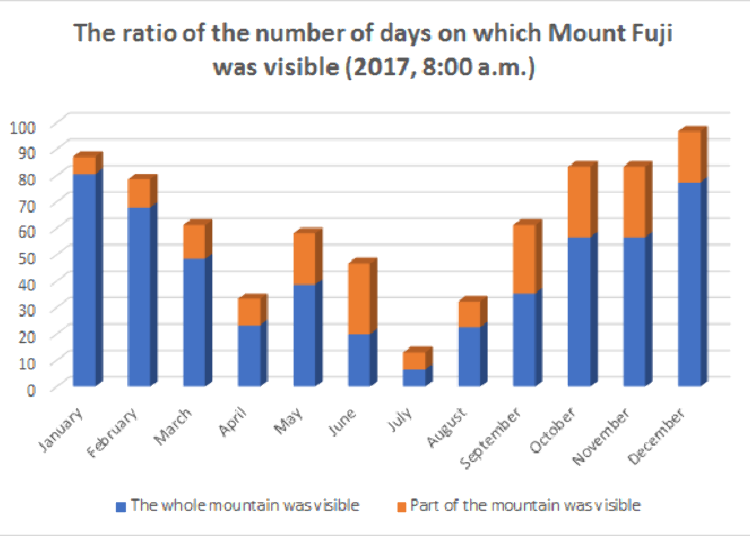
Mount Fuji visibility forecast by season
With a chance of 77.4%, December is the best season to see Mount Fuji. Even the chances of seeing only some parts of the mountain are high with 19.4%, and there was only a single day (3.2%) on which it couldn’t be seen at all.
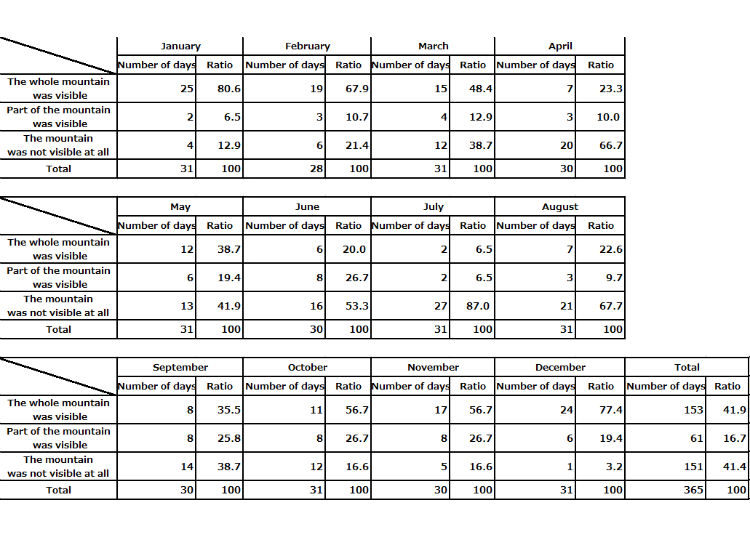
Winter is the best time to see Mount Fuji
Additionally, January had even better results: Mount Fuji was visible in its entirety a full 80.6% of the month, even more than in December.
However, this depends on the weather and climate, and there are some years in which visibility is better during December and some years in which January is the prime month.
That’s why it is said that winter, including both December and January, is the best time of the year to see the mountain. Mount Fuji during winter is stunningly beautiful, coated in pure white snow, and visible even from far away thanks to the dry air.
Furthermore, February still carries the chilliness of December and January, while November marks the change from autumn to winter – both months have figures of high chances of seeing Mount Fuji. It is 67.9% in February and 56.7% in November.
On the flip side, July has the lowest chances of seeing Mount Fuji with only 6.5%. This figure is for being able to see parts of Mount Fuji – the chances of not seeing the mountain at all are as high as 87%.
A similarly low chance has April with only 23.3% chance to see the mountain as a whole. Partial visibility is at 10% and not seeing the mountain at all at 66.7%.
August is similar to April, with the whole Mount Fuji only being visible 22.6% of the month. Parts could be seen 9.7% of the time and the chances of the mountain hiding completely were 67.7%.
In June, not being able to see the mountain is also higher than 50%, and it can be said that Mount Fuji is very likely not visible or not at its most beautiful during warm weather.
Looking at several past years, you’ll come across summers in which Mount Fuji’s visibility sits at 0% for July and/or August every once in a while. If you plan a trip to Japan during summer, it may be smart to not expect too much in terms of being able to gaze at Japan’s most iconic mountain. On the other hand, if you get to spot it during the hot months, you can consider yourself kissed by luck!
The data makes clear that the chances of seeing Mount Fuji greatly depend on the season. If Mount Fuji is on top of your must-see list when coming to Japan, you should choose the timing of your trip accordingly.
2. When is the Best Time of Day to See Mount Fuji?
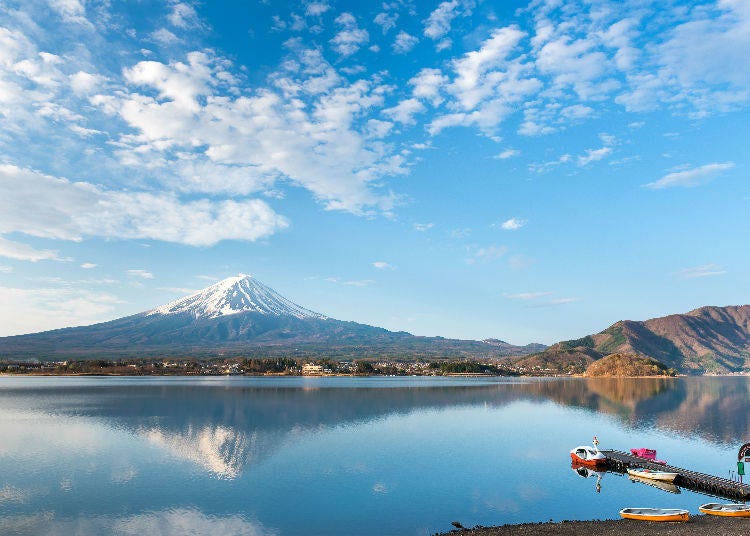
The best time of day to see Mount Fuji is in the morning. According to Fuji City’s data of 8:00 a.m., 12:00 p.m., and 4:00 p.m., the highest chances of seeing the mountain in full are in the morning at 8:00 a.m. As the day progresses into the afternoon, it gets harder to see.
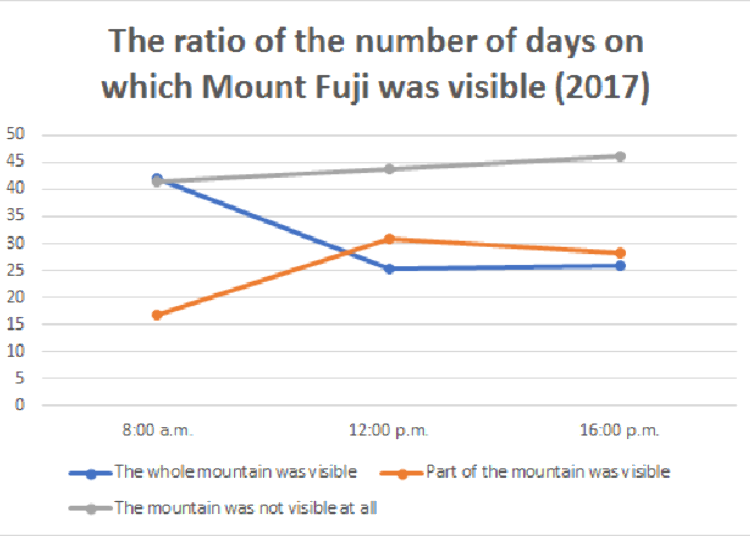
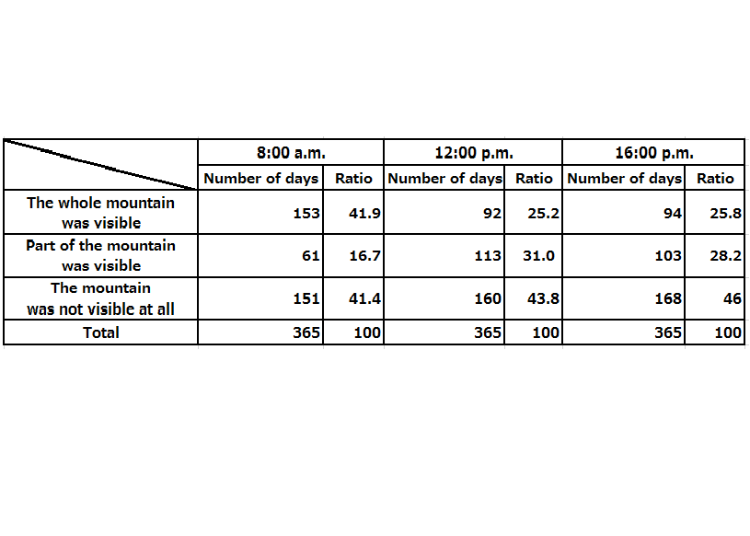
However, the difference is very small on days on which Mount Fuji cannot be seen at all (with 10% even in years with big differences). There are considerable differences regarding the time of day as to how well the full mountain can be seen.
3. Connection between the Weather on the Ground and Mount Fuji’s Climate
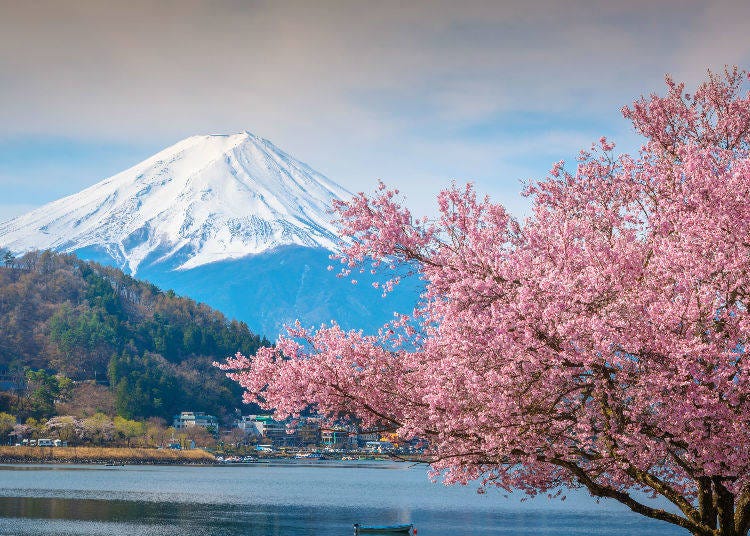
It’s rather obvious that Mount Fuji cannot be seen during cloudy or rainy weather, but on the other hand side, sunny weather in flat areas such as Tokyo does not guarantee a beautifully visible mountain.
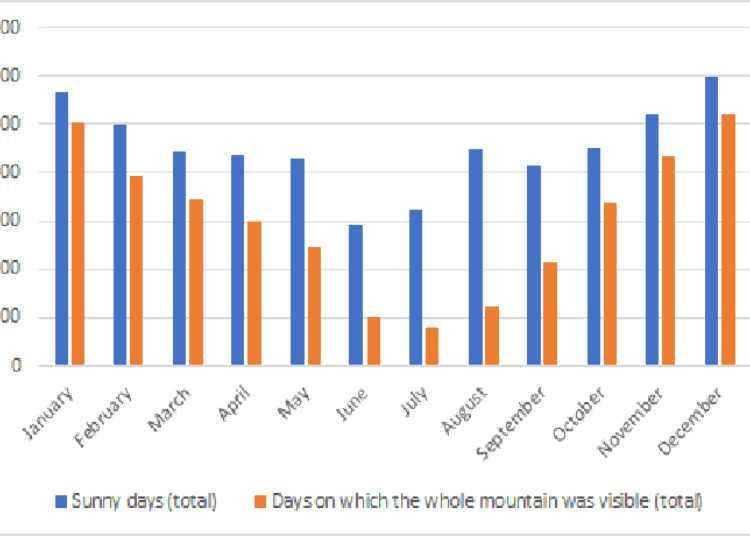
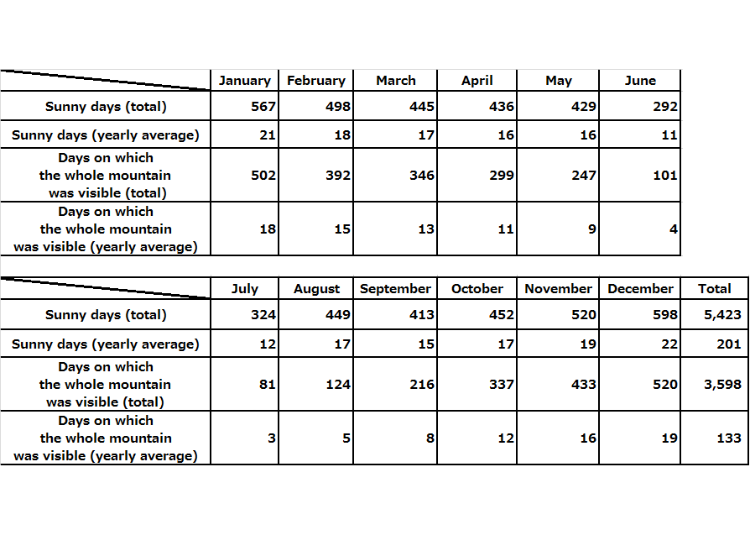
Please note: the number of days on which the whole mountain can be seen is not equal to the number of sunny days.
According to Fuji City’s results of observing “the relationship between the weather on the ground and Mount Fuji’s visibility,” there is not much difference between sunny days and days on which the mountain can be seen as a whole between January and April, as well as between October and December.
However, even fair weather may have Mount Fuji hidden behind haze or clouds between May and September that’s a rather large difference there.

Additionally, when Mount Fuji is surrounded by clouds (except those that are above the summit), it often is a precursor to rain. People living in the flatland around Mount Fuji use this as one staple method to predict the weather.
4. Where can you see Mt. Fuji from Tokyo?
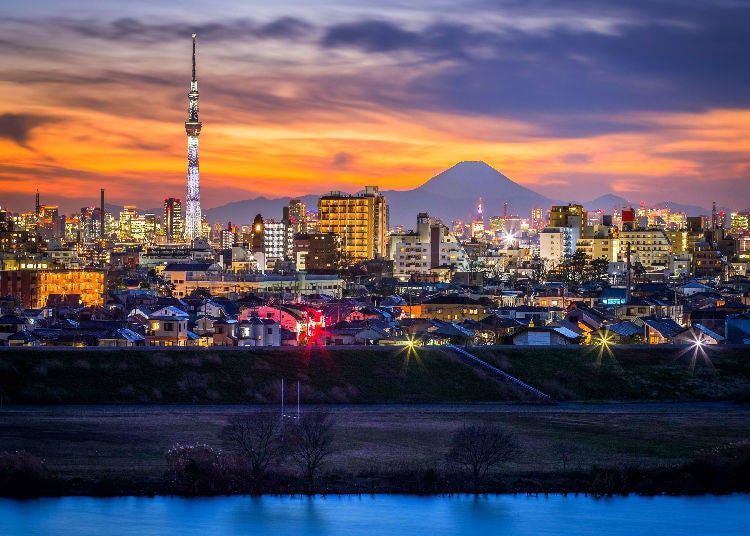
There are various spots all around Tokyo from which you can get a nice view on Mount Fuji, with the prime choices being observation platforms such as the Tokyo Metropolitan Government Observation Deck, Tokyo Tower, Roppongi Hills, and Tokyo Skytree.
But there are also other places that are not extremely high up. If you walk north towards Ebisu Station from Meguro Station, go towards Ebisu Garden Place and descend westward from Fujimisaka (between Meguro-ku Meguro 1-Chome and Shinagawa-ku Kamiōsaki 2-chome). There, you’ll see Mount Fuji right in front of you.
Another good spot is Mount Takao, although it is about an hour by train from Shinjuku Station. From the nature-rich spot, you’ll often get to see Mount Fuji. On top of that, Mount Takao is a wonderful natural getaway if you need a break from Tokyo’s hustle and bustle.
Mount Fuji can also be seen well from the observation deck on the 5th floor of Haneda Airport’s International Terminal. This is also the only spot that is open 24 hours, so if you happen to have a flight early in the morning, make sure to stop by that observation deck. It’s very likely that you’ll be able to see Mount Fuji in the soft glow of the early morning.
5. Which side of the Shinkansen to sit to see Mt. Fuji?

When going from Tokyo west, sit on the far right side in seat E and you will have a perfect view of Mt. Fuji around Shin-Fuji Station, about 50 minutes into the trip.
Likewise, going from Kansai to Tokyo, try to sit on the left side of the direction of travel. The mountain can be seen from Shizuoka Station, about 1 hour and 40 minutes into the journey from Shin-Osaka Station.
The part where Mount Fuji can be seen is the second section if you come from Tokyo Station, between Shin-Yokohama Station and Shizuoka Station. It also looks beautiful from Atami Station which is about 35 minutes after Tokyo, and the part between the three stations of Atami, Mishima, and Shin-Fuji offer a great view.
However, note that only the “Kodama” Shinkansen stops at Shin-Fuji Station.
If you come from Osaka and ride the Tokaido Shinkansen’s “Hikari,” we recommend having your camera at the ready from Shizuoka Station. It is about 1 hour and 40 to 50 minutes away from Shin-Osaka Station.
The earliest Shinkansen “Nozomi” does not stop at either Atami, Mishima, Shin-Fuji or Shizuoka Station. As a rough guide, get ready around 30 minutes after departing from Tokyo and right behind Atami Station. Coming from Shin-Osaka, it takes about 1 hour and 40 minutes until you need to pay attention, right after Shizuoka Station.
Final Thoughts
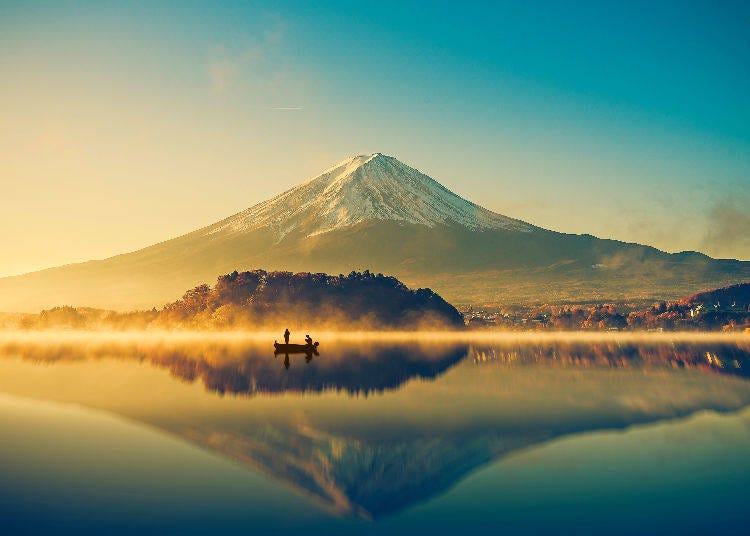
Mount Fuji is synonymous with Japan itself and a must-see for pretty much every tourist and traveler.
Knowing the best and worst timings for Mount Fuji visibility does drastically increase the chances of making the most out of your Mount Fuji experience!
If you’ve planned a trip to Japan in summer, it might be best to not focus on the mountain too much and instead enjoy the many other experiences that a Japanese summer has to offer.
Winter, on the other hand, will offer you spectacular views and it would be a shame to miss out on the stunning view of Mount Fuji!
We hope that our little guide will help you make the most out of your trip!
-
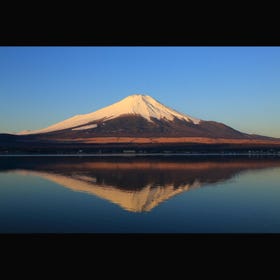
-
Address
Fujiyoshida-shi, Yamanashi, 403-0000
View Map
-
Nearest Station
Gotemba Station (JR Gotemba Line)
-
Address
Accommodations near Mt. Fuji
-

-
Address
Katsuyama 511, Fujikawaguchiko, Yamanashi, 401-0310
View Map
-
Nearest Station
Kawaguchiko Station (Kawaguchiko Line (Fujikyuko))
47 minutes on foot
Vacancy search, reservation
Check with our partner site as the latest rates, rate details, and guest room requirements may vary.
-
Address
-
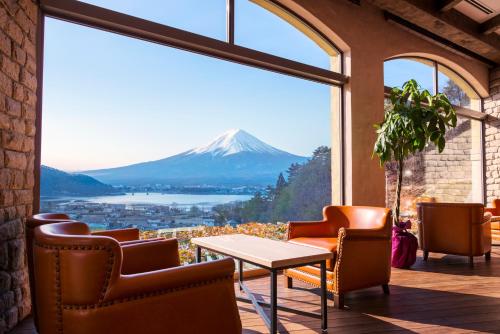
-
Address
Kawaguchi 2395, Fujikawaguchiko, Yamanashi, 401-0304
View Map
-
Nearest Station
Kawaguchiko Station (Kawaguchiko Line (Fujikyuko))
Vacancy search, reservation
Check with our partner site as the latest rates, rate details, and guest room requirements may vary.
-
Address
-

-
Address
1360-83 Yamanaka, Yamanakako-mura, Minamitsuru-gun, Yamanashi, 401-0501
View Map
-
Nearest Station
Fujisan Station (Otsuki Line (Fujikyuko) / Kawaguchiko Line (Fujikyuko))
Vacancy search, reservation
Check with our partner site as the latest rates, rate details, and guest room requirements may vary.
-
Address
-

-
Address
2654 Arakura, Fujiyoshida-shi, Yamanashi, 403-0011
View Map
-
Nearest Station
Fujikyu-Highland Station (Kawaguchiko Line (Fujikyuko))
6 minutes on foot
Vacancy search, reservation
Check with our partner site as the latest rates, rate details, and guest room requirements may vary.
-
Address
*This information is from the time of this article’s publication.
*Prices and options mentioned are subject to change.
*Unless stated otherwise, all prices include tax.










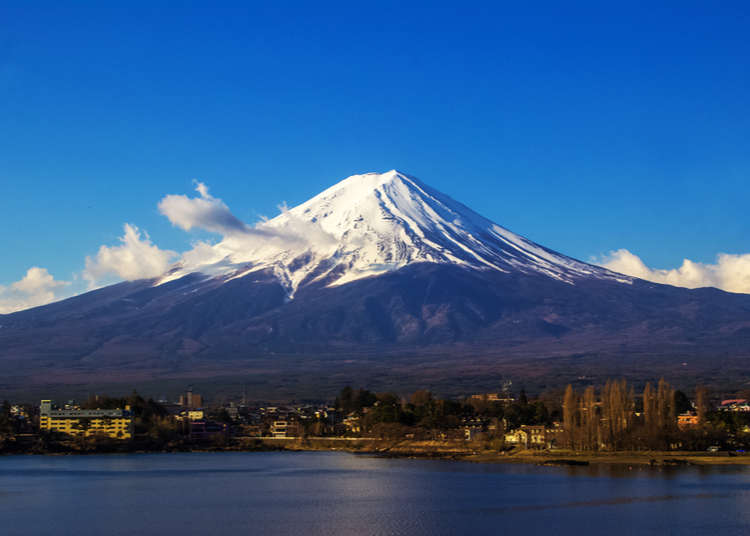










Discussion about this post